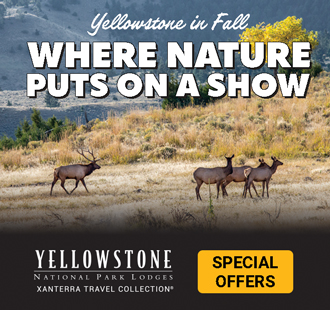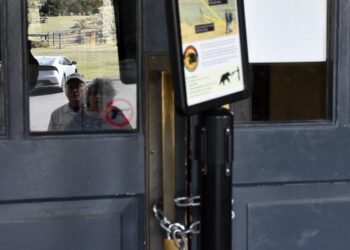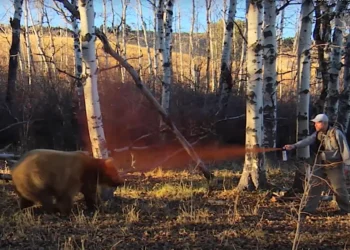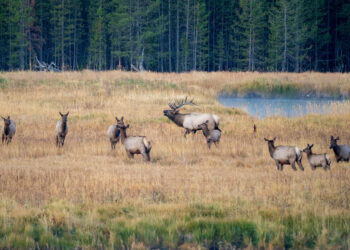Greater Yellowstone confronts explosion of outdoor recreation

By Todd Wilkinson EBS Environmental Columnist
Few would deny that Linda Merigliano has a wicked tough job. No other national forest in Greater Yellowstone has more recreation pressure coming to bear on high-value wildlife habitat than the 3.4 million-acre Bridger-Teton.
The Bridger-Teton covers a chunk of federal public land larger than Yellowstone and Grand Teton national parks plus the John D. Rockefeller Parkway and National Elk Refuge combined. It also is home to Jackson Hole Mountain Resort.
Along with Jackson Hole’s hardcore lot of outdoor recreationists aggressively seeking new places to play, the valley of the Tetons, like the mountains rimming the Gallatin Valley, is inundated by a tidal wave of visiting adrenaline junkies.
Merigliano, the Bridger-Teton’s wilderness and recreation program manager, could not possibly have imagined how contentious issues would be when she started her work in civil service decades ago – nor could she have predicted the ways new technology is transforming how people explore the backcountry.
High-powered snowmobiles can highmark on slopes unreachable a generation ago. Skiers and snowboarders are making descents off hair-raising summits. Mountain bikers, motorcyclists, paddle boaters and packrafters have equipment manufacturers pushing for access and there’s an array of others using wildlands, from BASE jumpers to drone pilots.
I’m a huge fan of the thoughtfulness Merigliano brings to confronting seemingly intractable conundrums. Civil servants aren’t paid to be popular or gauge decisions on which direction the political winds blow. By law they are charged with stewarding public resources so that irreplaceable resources aren’t spoiled. They are mandated to do what’s best for the public interest over the long term until they hand over management reins to successors. People who do that well are American heroes.
Last May, Merigliano gave an eye-opening presentation in Bozeman, Montana, on how she’s dealing with the convergence of recreation users demanding more turf at the same time that Bridger-Teton’s top asset – wildlife – hangs in the balance (watch Merigliano’s Bozeman talk on YouTube). What’s happening on the B-T is no different from concerns being raised on the Custer-Gallatin National Forest, now in the midst of updating its new forest-wide management plan.
One thing has become clear: Self-interested, short-term-thinking humans and for-profit companies, if left unbridled, are almost incapable of exercising self-restraint.
Merigliano discussed the legacy of illegal trail and road building that occurred in the Bridger-Teton involving motorcyclists, ATVers, pickups and mountain bikers. For now peace has been achieved following a period in which conflicts between new and traditional user groups erupted. Will it last?
Some recreationists refuse to take “no” for an answer and with a nod and wink, encourage illegal incursions. Public land managers – short staffed, underfunded and overwhelmed by greater demands on resources – find those people and their me-first attitudes adolescent and abhorrent.
Recently packrafters enlisted outgoing U.S. Rep. Cynthia Lummis of Wyoming – who has amassed one of the worst anti-environmental voting records in Congress – to help them force their way into the rivers of Yellowstone National Park which, historically, have been off limits in order to protect wildlife and solitude.
A huge list of people, including reputable public land experts serving both Republican and Democratic presidents, stand opposed to what packrafters are doing with Lummis.
Opponents include former Yellowstone superintendents; former Interior Secretary Bruce Babbitt; Patagonia founder Yvon Chouinard, Bozeman science writer David Quammen; Doug Peacock; Dave Foreman; Howie Wolke; writers Terry Tempest Williams and Rick Bass; the Montana Council of Trout Unlimited; more than a dozen wildland conservation groups; and a long list of others.
“I think most people understand and appreciate that Yellowstone is different. It’s the world’s first national park,” said Scott Christensen, conservation director at the Greater Yellowstone Coalition. “Through a lot of hard work over decades and decades, Yellowstone has all of its native wildlife and is arguably the wildest and most sensitive place in the Lower 48.”
Yellowstone is special, Christensen said, “because very thoughtful people have worked hard to shield it from the mentality that every activity should be allowed in every place at any time. If Congress sets the precedent of piercing that shield, Yellowstone loses some of its magic and the park will be at risk from proposals much worse than packrafting.”
GYC intends to sponsor a scientific conference at Montana State University in Bozeman that examines the ecological effects of growing outdoor recreation.
I spoke with a public lands official who estimated that in the national forests of Greater Yellowstone there already are hundreds of thousands of annual mountain-bike user days that did not exist 20 years ago. The science of measuring impacts has not kept pace with the rate of more users. That volume is expected to explode in the coming decade, but at what cost?
Moreover, some mountain bikers have staked out the radical position of pushing to have federal wilderness areas opened to cycling and have said that no new wilderness areas should be created from wilderness study areas without having biking trails in them.
“While many of us love living here for the great access to things like hiking, biking, fishing and skiing, the reality is that with more of us engaging in these activities in more and more places we need to learn about and take into account the impact recreation has on the lands, waters and wildlife of our region,” Christensen said.
GYC’s examination of recreation will focus on not only the best available science but also what we don’t know and need to get our arms around. Trying to be foresighted now is better than being defensive later, he said.
“A better understanding of the implications a vibrant and growing outdoor recreation movement has on our sensitive ecosystem will help guide land managers to make sound decisions and hopefully help each of us recognize that we aren’t alone in the woods anymore,” Christensen said.
New West columnist Todd Wilkinson is author of “Grizzlies of Pilgrim Creek, An Intimate Portait of 399, the Most Famous Bear of Greater Yellowstone” featuring photos by Thomas Mangelsen and only available at mangelsen.com/grizzly. Mangelsen is featured in the current issue of Mountain Outlaw magazine, now on newsstands.













